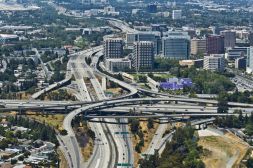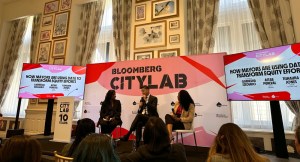For open data that matters, you need to get tactical

When the Sunlight Foundation began advocating for governments to open data sets and make them publicly available online in 2006, we had our work cut out for us. We weren’t sure which obstacle was more daunting: the technological challenge or the bureaucratic one.
A decade later, eight of the 10 largest cities in the United States have open data policies and dedicated open data websites in place. Across the continent and the world, dozens of nations and hundreds of cities are taking the idea of making public information available online, and they’re running with it. Governments of every size are using open data to make evidence-based public policy decisions, run government more efficiently and create a shared understanding of priorities, challenges and long-term goals.
The importance of open data policy is why the Sunlight Foundation’s Open Cities team has worked with 57 cities since 2015, with 37 of them passing or enacting open data policies. As part of that work, we’ve created resources to help cities write their own open data policies. Collectively, these policies are empowering residents and community leaders to make better-informed decisions and build trust in the collaborative work of government.
The strides we have made over the last 10 years are significant. Making government information available to residents in a structured, programmatic way is a crucial first step in using it to solve community problems, but it is only part of where this work needs to go.
There has been and continues to be a disconnect between the rhetoric and promise of open data and about what it has meant in terms of practical reform. The promise of open data is not about data on a website. The promise is for a new kind of relationship between government and people, one that brings about collaborative opportunities for co-creation, and while there has been significant progress in on this front, reforms are so far falling short.
The next step is to use this open government data for action. City leaders must use open government data to empower the people making direct, tangible changes in their communities — both inside and outside of government. Every member of a community should look for better answers to the basic question: How can open data make their work more effective? How can greater public access to public information help expand upon their successes and bring them to other communities?
Cities with open data policies and platforms have made millions of data sets available to residents. That data is most useful, however, when it’s not simply accessible but actively used as a tool for residents, researchers and community actors working toward progress on social problems.
Open government data only realizes its full democratic potential when it’s released and applied to shared community needs, working with a community to understand and collectively respond to a given challenge. In the best-case scenario, open government data without this understanding is unuseful. In the worst-case scenario, it actively obscures what local governments are doing. City halls need to understand community information needs, seek signals and evidence for that demand and find specific use cases for open government data. Armed with this understanding, the officials charged with being good stewards of public records need to do more to support community use and re-use of open data.
Sunlight calls this work “Tactical Data Engagement,” and we see it as the next frontier for open data programs in local governments across the country. Last week, we released the official first edition of A Guide to Tactical Data Engagement, which lays out our four-step process for increasing the social impact of open government data. Any city, anywhere, can use our new guide to make a positive impact in their community with open data.
Tactical Data Engagement completes what we see as the full cycle of open data: Commit to the public’s right to access data > Make public data accessible online > Then actively support residents’ opportunities to use it and tell you how to make it better.
Dozens of American cities have gotten through step one of this cycle. Many are now getting to step two. A few have made it to step three — or made it back to the start — and improved the way open data supports community progress.
The recent responses to Hurricane Harvey and Irma are compelling examples of this cycle. City, state and federal agencies are making more and more open data available for communities facing hurricanes and other disasters before, during and after the weather events. Local developers are taking that information and using it to direct rescuers, source donations and save lives. The full cycle will be when cities adopt these community-led solutions and make them official parts of city response.
For our part, we’re beginning to pilot our tactical data approach in two cities this fall. We’re helping Glendale, Arizona — a city that needs needs more housing and housing that’s more affordable — to improve information flows and open government data for specific use cases supporting the real estate community. The project team is producing a guide for real estate professionals in the city about how to access existing data. We’re working to improve old, bureaucratic processes to make permitting data accessible online and searchable by address for the first time using the city’s open data platform. In Madison, Wisconsin, we’ll be supporting city staff to identify and support specific open data use cases connected to community goals such as “Green Infrastructure” or “Complete Neighborhoods” that were developed collaboratively with community members as part of the city’s comprehensive planning process, Imagine Madison.
Opening government data opens up a new world of possibilities for public servants and the public they serve. The next step is to make that potential a reality. We’re excited to see more cities put this idea into action and to help them as much as we can along the way.

This story was featured in StateScoop Special Report: Open Government (2017)






